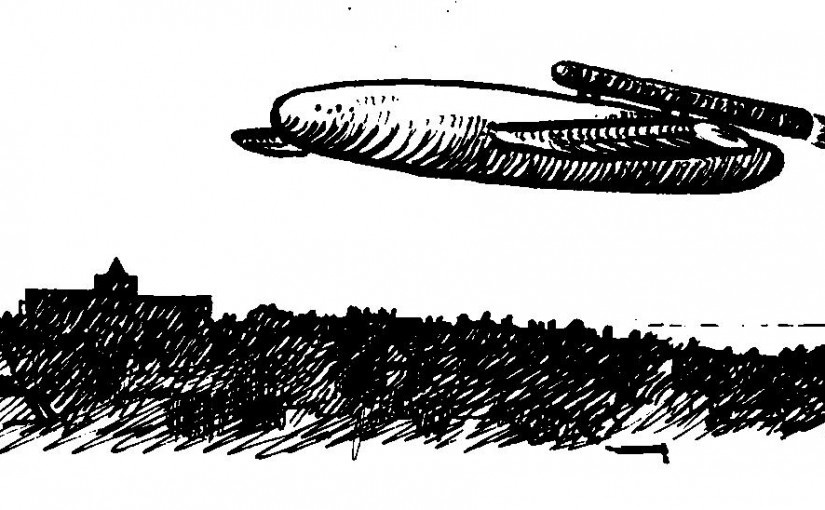HITLER’S SECRET WEAPON
Early June 1944 was an optimistic period for the people of Rye and England. Here on the southern coast great armies were massing in preparation for the invasion of Hitler’s Europe.
Hitler’s forces were already hard pressed by the Russian armies smashing their way towards Germany from the East. The Luftwaffe, it seemed, was defeated, the R.A.F. had maintained mastery of the air and few raids were launched against this coast. Almost everyone evacuated during the crisis times of 1940 had drifted home. “Hitler’s days are numbered,” people were saying, “It will all be over by Christmas.”
The great invasion began on the 6th June and after heavy fighting on the Normandy beaches the allied armies gained a strong foothold and began to build up reserves and supplies in preparation for the great thrust across occupied Europe.
In Rye many families waited anxiously for news of their loved ones, fighting again on French soil.
Aeroplanes with Rear Lights
Exactly a week after “D” Day on June 13th, Rye’s Fire Watchers noticed a strange aircraft with a bright red rear light crossing the town from the sea and making its way inland. What could it be? Talk of Hitler’s secret weapons had been going on for many months and threats by Lord Haw-Haw broadcast to Britain on Germany’s propaganda wave-length had hinted that these weapons were soon to be unleashed. The aeroplanes with rear lights turned out to be Vi Flying Bombs and soon the numbers crossing the coast increased from a few a day to hundreds a day.
Second Evacuation
For the second time the women and children of Rye were evacuated. At first the problem seemed hopeless, the doodlebugs, as they were called locally, were faster than our fighter aircraft and were very difficult to shoot down. Soon, however, the fighter
pilots evolved a method of tackling these pilotless menaces, by diving from above; they were able to accumulate enough speed to catch and dispatch them.
Hundreds of guns were brought south and the biggest concentration of artillery in the country was massed between Camber and Rye Harbour. There were no fewer than 1,300 gunners on those sites and the cannonade was terrific.
These anti bomb precautions prevented the vast majority of Vis from reaching their targets. They were usually aimed for London. Shooting them down on the coast however, brought great danger to this area. Six Vis came down in the Borough of Rye and Civil Defence personnel were reinforced to deal with casualties caused by these destructive weapons.

Curtain of Steel
At the height of the flying bomb period the barrage at night was a fantastic sight. Looking from Rye towards the sea the whole coast line was lit by the bursting shells and the stabbing fingers of light projected by the search lights. Dozens of flying bombs failed to get through the curtain of steel and crashed harmlessly in the sea and on the marshland around Rye. Much damage however, was caused by the bombs that dropped in the populated areas.
With the successful offensive in France the bomb sites were moved back as the fronts advanced and gradually the number of bombs grew less.
The war was not over by Christmas 1944, it stretched on into 1945 and before the final victory over Germany on May 7th, 1945 a new and even more sinister weapon was used by Hitler, the V2. The V2 was a rocket bomb against which there was no defence. These bombs always reached their target, London and its suburbs, and as none were stopped en route, Rye did not have to contend with this weapon.
Rye’s Own June 1967
All articles, photographs and drawings on this web site are World Copyright Protected. No reproduction for publication without prior arrangement. © World Copyright 2015 Cinque Ports Magazines Rye Ltd., Guinea Hall Lodge Sellindge TN25 6EG
